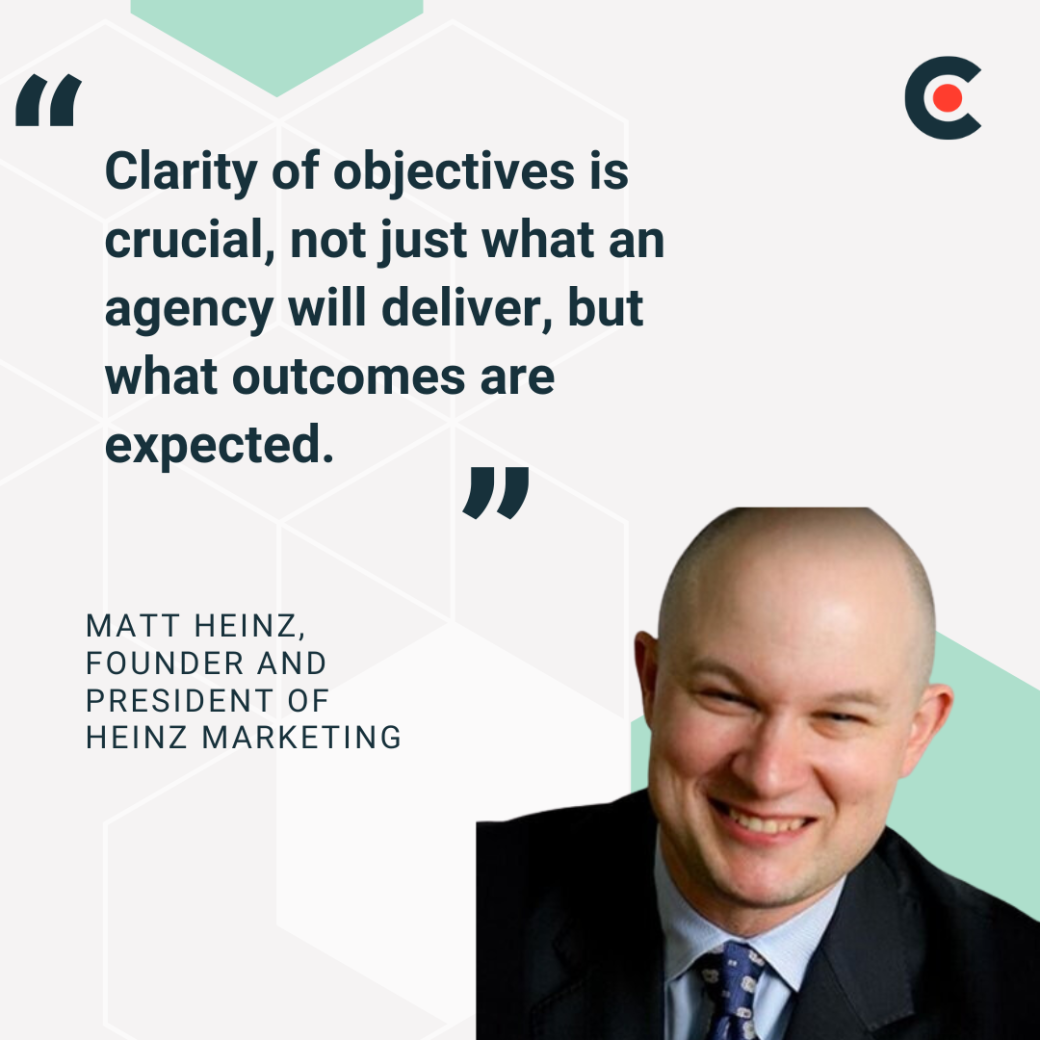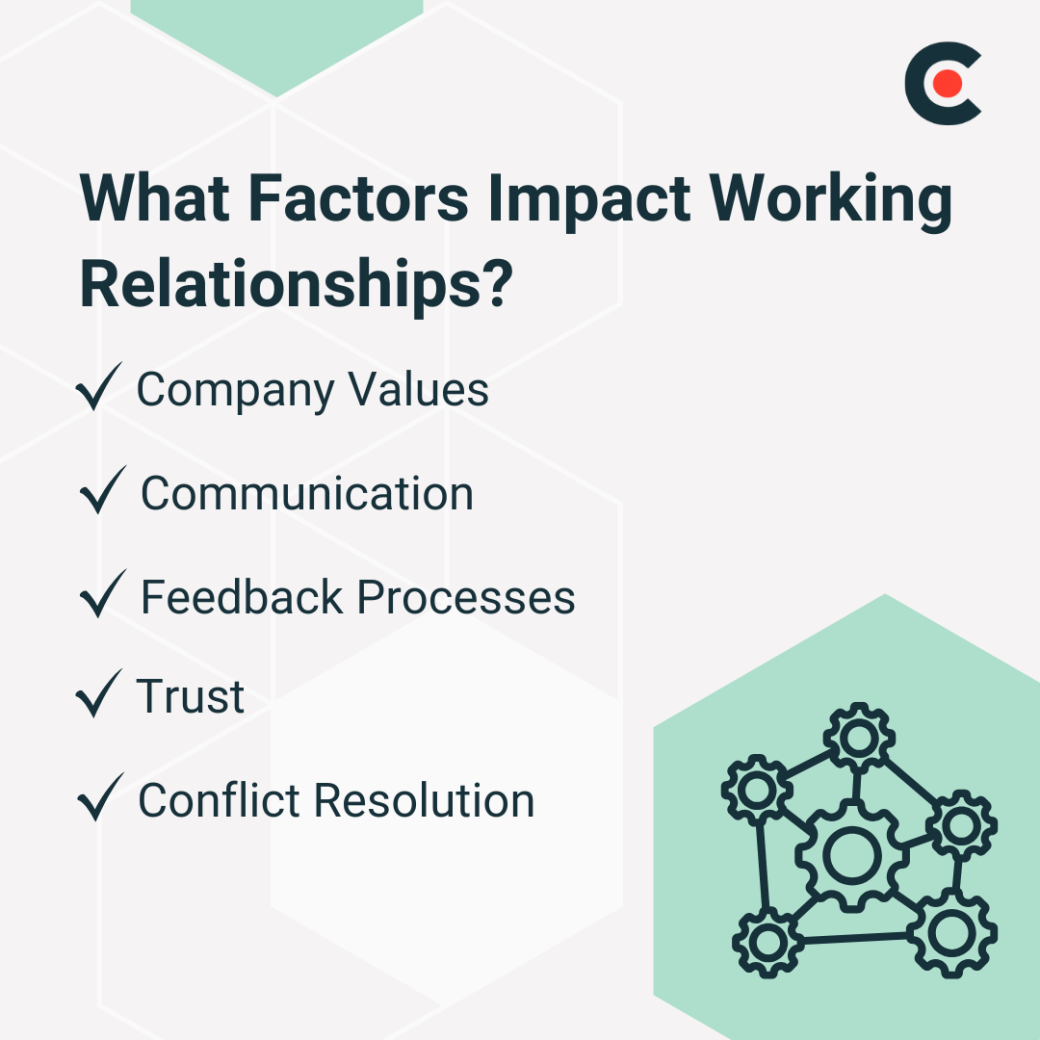

Updated March 13, 2025
Businesses often invest significant money and time into their agency partnerships. Measuring the return on investment (ROI) will help you evaluate the effectiveness of these services and develop great working relationships. Matt Heinz, Founder and President of Heinz Marketing, goes through his strategies on measuring ROI and building strong collaborations.
Partnering with an external agency allows you to outsource complex tasks and tap into specialized expertise. Whether you need to analyze customer data or build an attention-grabbing social media campaign, there’s an agency that can help.
However, it’s not always easy to see the impact of these collaborations. Unlike employees, agency partners work behind the scenes, and many projects don’t have immediate deliverables. You may wonder if your partnership is truly helping you achieve your goals or if it has a low return on investment (ROI).
Understanding how to measure ROI enables you to track your progress and identify areas for improvement. This metric also helps you make strategic business decisions and allocate resources more effectively for your current and future partnerships. That way, you can focus on investing in the projects and working relationships with the greatest impact on your long-term success.
Matt Heinz, founder and president of Heinz Marketing, gives insights into the most important practices for measuring ROI with agency partners.
Measuring ROI involves two key components: deliverables and objectives.
Deliverables refer to the tangible services or outputs provided by the agency partner. They typically include specific products or tasks. For example, a marketing agency’s deliverables could include developing a social media strategy and creating Instagram posts.
By contrast, objectives are the big-picture results you want to accomplish through the service. They reveal how the provider’s efforts have impacted your business and contributed to your strategic goals. Examples of objectives include closing deals, increasing brand awareness, and reducing the churn rate.
Communicate your expectations for both deliverables and objectives clearly with your agency partner from the outset. Describe your vision and use specific figures to outline measurable outcomes. For instance, you might request that your partner create at least 15 blog posts or achieve a 10% increase in web traffic in six months.
Setting these benchmarks will help you and your partner collaborate more effectively. It will also give you a clear framework to track your progress and determine whether your partnership is delivering a strong return on investment.
Defining your deliverables and objectives can feel challenging, especially if you’re launching a brand-new project. But with a little brainstorming, you can shape your vision and help your partner understand exactly what you want to achieve.

“Clarity of objectives is crucial, not just what an agency will deliver, but what outcomes are expected,” said Heinz during our discussion.
Get started using the SMART framework to outline your goals for your partnership. SMART goals are:
Here are a few examples of SMART objectives:
You should also clarify your project scope and targets from the get-go. Outline the high-level scope, which includes your central goals and mission. Next, distinguish between short-term targets — goals to accomplish within the next three months — and long-term targets to build toward.
Once you’ve defined your SMART objectives, collaborate with your agency partner to identify deliverables to help you achieve your desired outcomes. For instance, if you want to grow your YouTube following, your partner may recommend creating 10 videos on specific topics that resonate with your audience.
Developing a strong working relationship with your agency partner is one of the most effective strategies for maximizing ROI.
“The working relationship and values fit are also important. We include our values and what we expect from clients in our proposal template,” said Heinz. “Treat it as a true partnership with clear outcomes and understanding of how you'll work together.”
A working relationship involves two or more parties — like a business and a marketing agency — collaborating to accomplish shared goals. Great relationships are built when both parties equally invest in the project’s success and work together to overcome challenges.
Like any partnership, building positive working relationships takes effort and time, but the benefits are well worth it. A solid relationship allows you to communicate openly and transparently, reducing the risk of costly misunderstandings. It also helps both parties understand each other’s strengths and limitations so you can set realistic expectations.
Additionally, developing a strong relationship lets you measure ROI more effectively. With open communication, you can clearly convey your expectations for deliverables and objectives. You’ll also collaborate to establish realistic performance indicators and adjust strategies as needed.
There’s no one-size-fits-all approach to building a productive working relationship. Every service provider has different communication styles, expectations, and workflows.
Set yourself up for success by taking the time to get to know potential partners. Here are a few factors that can affect how effectively you collaborate:

It’s natural to expect your agency partners to deliver a high ROI. Clearly outlining deliverables and objectives before you sign an agreement will help you maximize your success. You should also communicate your business values to establish common ground and start your working relationship positively. Building a strong foundation early will increase your chances of success.

Matt Heinz is the Founder and President of Heinz Marketing, a B2B marketing firm that specializes in building predictable revenue pipelines for complex sales environments. With over 20 years of experience, Matt has become a recognized authority in demand generation, pipeline strategy, and sales acceleration. Known for his practical insights and no-nonsense approach, he helps businesses align their marketing and sales efforts to drive sustainable growth. Matt is also a sought-after speaker, author, and podcast host in the B2B marketing community.


